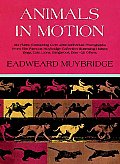
Article
-
Muybridge, Stanford and The Hobby Horse
Collaboration between the founder of one of our great universities and an English-born eccentric resulted in a series of events which changed horse art forever.
The "Farm" in Palo Alto
Leland Stanford (1824-1893), railroad executive, governer, senator, pioneer in California's wine industry and founder of Stanford University, was also a breeder and trainer of horses. His farm (the Palo Alto Stock Farm) was one of the finest for trotting horses in the United States and in the 1880's and 1890's home to 600 horses and 150 trainers and staff. The "Farm" eventually became the site of Stanford University.
The farm ( and later the city) was named after one of Stanford's great trotting horses, Palo Alto.
The horse was in turn named after the first major battlefield victory of the Mexican War. Stanford's trotters won numerous trophies and ribbons and several were credited with world record times. In his quest to breed the fastest possible trotters Stanford had a great interest in learning more and more about them, including details of the gait. One of the controversies at the time was whether or not a horse ever was completely airborne during the canter. The unaided human eye could not resolve that question.
Eadweard Muybridge

Enter Muybridge. With a tempestuous personality, sporting a Walt Whitman beard, and carrying on in the grand tradition of the English eccentric, it was said of Eadweard Muybridge that had he never been born a novelist would have created him. Coming to America from England at an early age, Muybridge established a reputation as one of San Francisco's great 19th century landscape photographers. Over time, his interests narrowed and became focused upon photographing and studying the motion of animals and people.
The two met in 1873 at which time Muybridge began to photograph Stanford's horses in motion. It should be noted that at this time, photographers often built their own equipment and mixed their own chemicals. Exposure time was usually measured in seconds rather than in tenths, much less one-hundredths of a second. Up to that time no photographer had been able to capture events too rapid to be seen by the naked eye.
The two worked together for nearly ten years. During that time Muybridge continually improved and refined his photographic processes. By 1877, Muybridge, in collaboration with Leland Stanford's engineering staff was able to photograph movement with a shutter speed of 1/2000th of a second. It was here that he provided conclusive proof that the horse did have all four hooves off the ground during the gallop.
The Hobby Horse
What was key to the world of horse art was found in the photographs which showed every aspect of the horses' gait. The photos showed that, at full gallop, all four hooves were for an instant under the horses belly and off the ground. Up to that time, most paintings of horses at full gallop showed the front legs extended forward and the hind legs extended to the rear. Unless a horse's motion was to be similar to that of a rabbits's, this position would be anatomically impossible. This posture by the way, is often referred to as the rocking horse or hobby-horse posture.
Can you image trying to stay in the saddle if a horse's motion was the same as a rabbit's?
It would be an adventure to say the least. Pleasure riding would be restricted to the walk, perhaps the slow trot. Canter? Forget it!
Driving? One horse or a team. Picture the effect if the horse(s) ran like rabbits. It would likely shake the buggy apart in a short distance.
In The Art of the Horse by John Fairley there is a reproduction of a wonderful painting depicting the chariot races at the Circus Maximus. It is an immensely realistic and powerful painting. However every horse under full gallop, has both front legs extended forward and both hind legs extended to the rear.
If that were the case it would be amazing if the charioteer could stay aboard for even one lap!
When Muybridge's results became generally known (largely through publication in Scientific American in 1878) they were readily accepted by artists such as Degas, Eakins, George Stubbs and Remington. Others, like Rodin had to go through a period of "furious denial" before abandoning the "rocking horse" style.
Muybridge continued his work up until his death in 1904. Like Johm Stubbs' studies of the anatomy of the horse, Muybridge's work had a profound influence on equine art. The artist could now study detail that the human eye could not see. His work with Stanford attracted the attention of Thomas Edison and, together with George Eastmans ongoing work in the development of film, set the stage for motion pictures. Also, as Stubb's efforts provided a new level of anatomical detail to the veterinary world, Muybridge's work introduced photography to the world of scientific data.
Back to Your Guide to Gifts for Horse Lovers Home Page